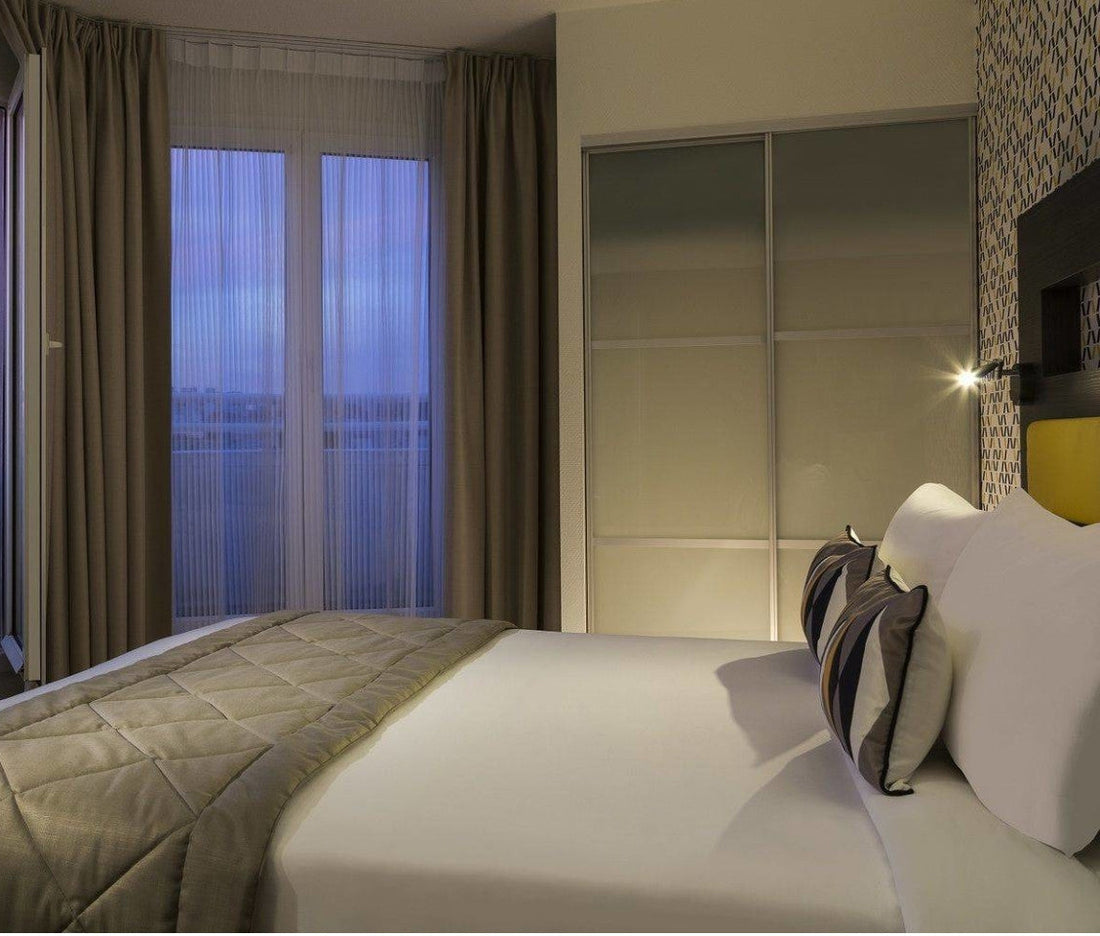
SOUND ABSORBING FABRICS, DO THEY REALLY WORK?
Share
When discussing the practice of soundproofing, the language used can sometimes be a little ambiguous, with terms like sound absorption and insulation often being confused with each other.
In many situations, even without completely soundproofing, sound absorption can be sufficient, as it reduces reverberation and sound echoes, resulting in a drier, cleaner sound.
Sound absorption is often achieved with sound-absorbing fabric.
SOUND ABSORBING FABRICS, DO THEY REALLY WORK?
The answer to this question is: Yes, they work! If you want a dry, echo-free sound. If you want to block the sound completely, you will be disappointed.
These fabrics are made of materials that “absorb” sound waves. The thickness of the fabric and the way it is sewn are important factors.
The materials usually used are polyester, with a weight of between 400 and 700 g/m2. It is ideal for curtains and wallpapers, to be used in recording studios, rehearsal rooms, conference rooms, etc.
WHERE TO USE A SOUND ABSORBING FABRIC
There are several situations where you can use sound-absorbing fabrics. The classic example is an empty room with many smooth and hard surfaces, such as walls, floors and ceilings.
If you try to speak out loud, the sound will be greatly amplified by these surfaces, increasing reverberation and echo. This is because sound waves reflect off the walls, floor, and ceiling.
By adding sound absorbing fabric to some of these surfaces, this effect will be diminished. The sound will not bounce around as much as before and will be slowed down, minimizing the amount of noise in the room.
Sound-absorbing fabric can be used:
- on the walls, on the windows, on the doors, on the ceiling, in the rehearsal rooms- in industrial environments where noisy machinery is present
- in the dance halls
- in conference rooms
The fabric won't eliminate noise 100 percent, but it will reduce reverberation and echo, and make you perceive the sound as quieter.
A fabric that absorbs sound well is made of thick and heavy material. For example, like theater curtains. So look at the thickness of the fabric when you are about to buy.
Another factor that affects the quality and price is whether the product is certified as flame retardant or not. This is very important if you have to use the fabric in public places such as cinemas, conference rooms, dance halls, theaters and anywhere that a certificate of suitability is needed to ensure the safety of the environments.
The aesthetic side of these products is often overlooked, but you can also find fabrics that offer you the possibility of choosing the color and matching it with the rest of the environment where you want to use it,
If you are looking for sound-absorbing fabrics, Doma Kalè offers within its range of products a line dedicated to this particular type of fabric, which combines the aesthetic side with the technical characteristics, being able to count on the assistance
